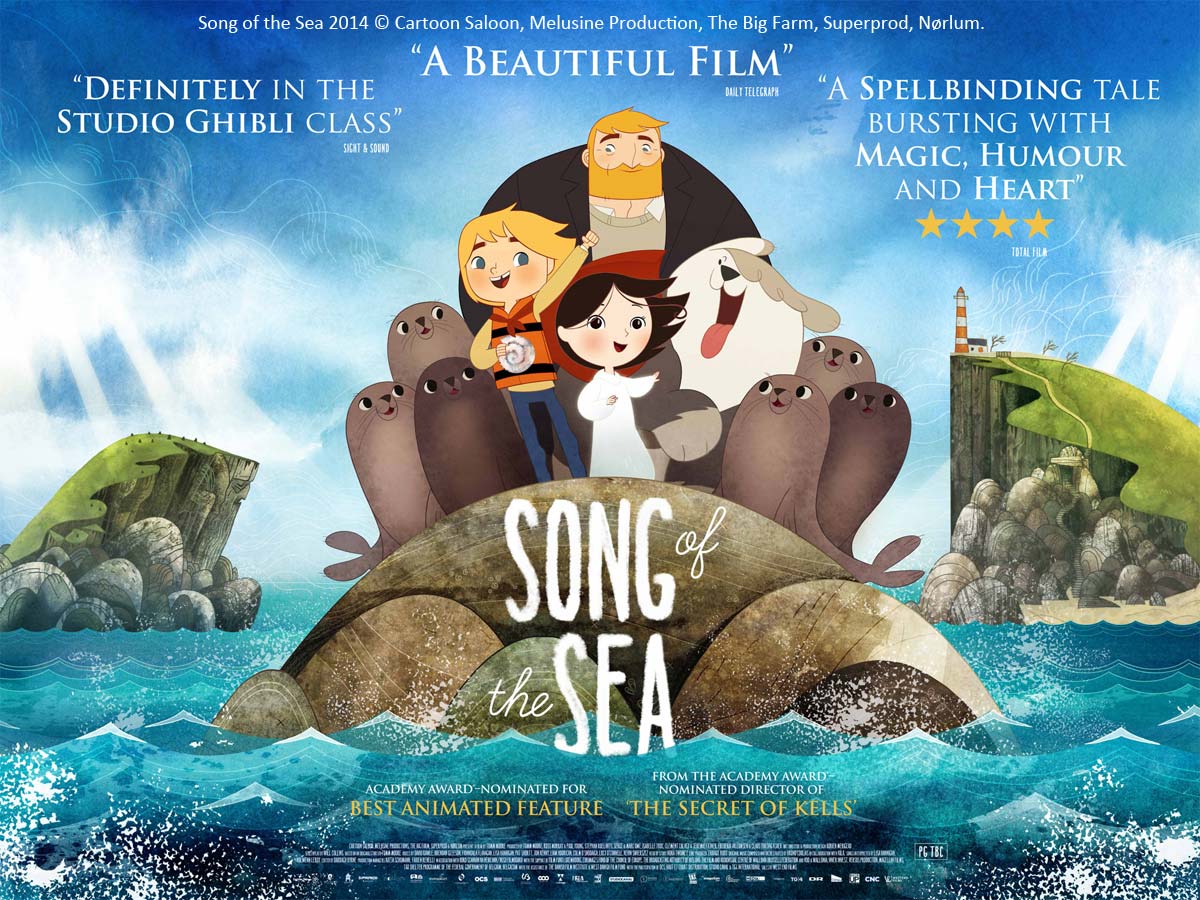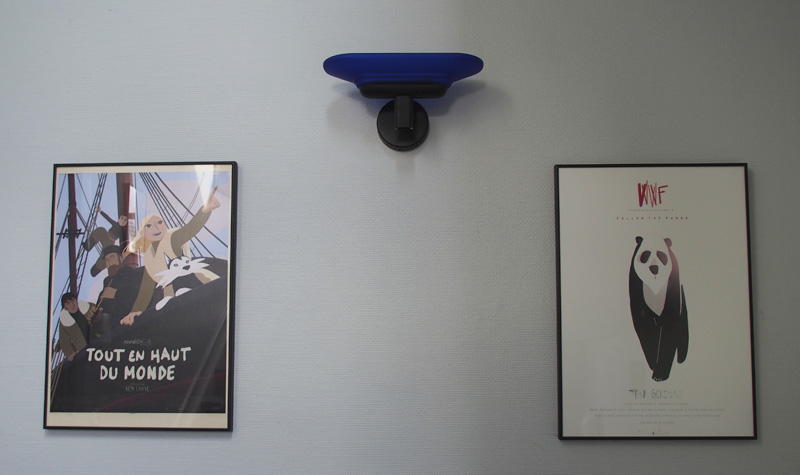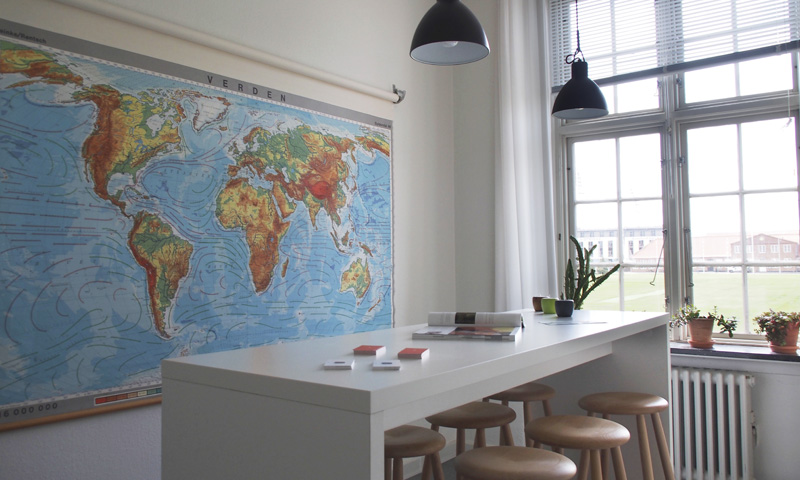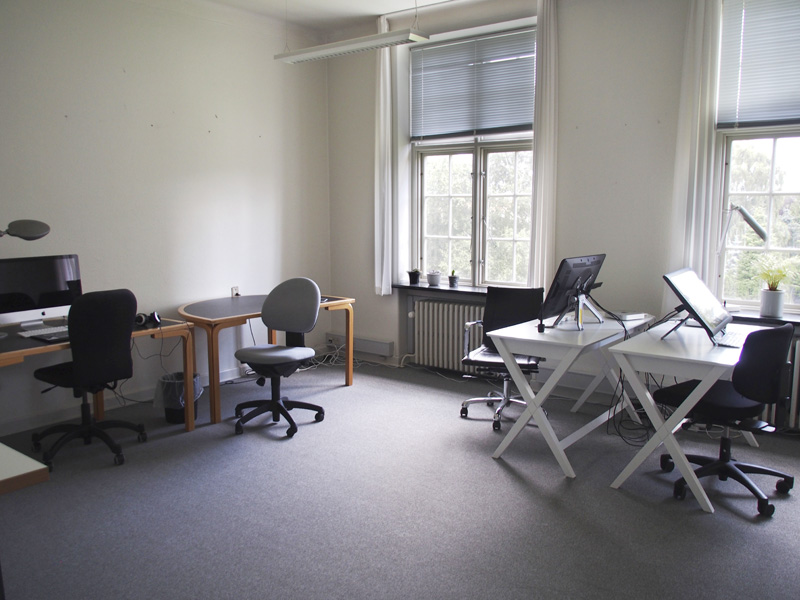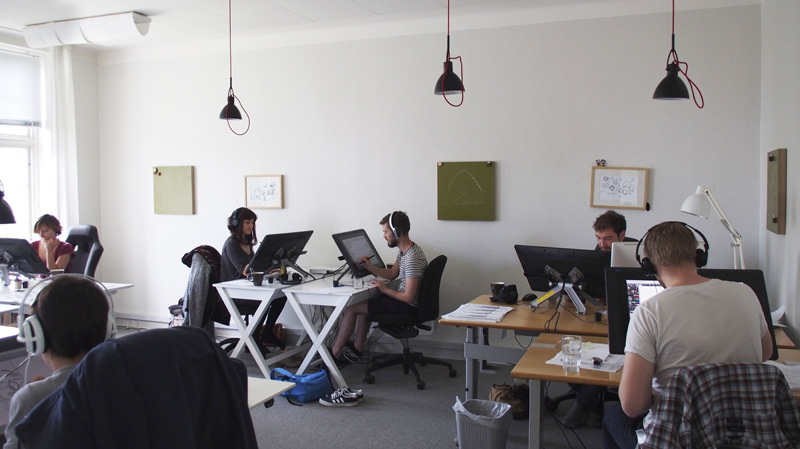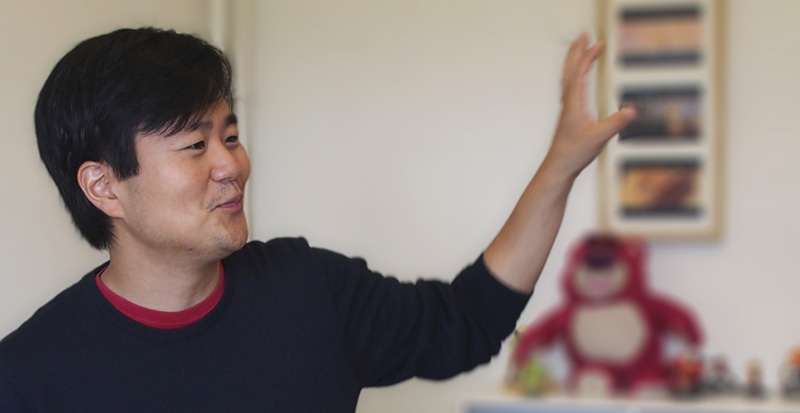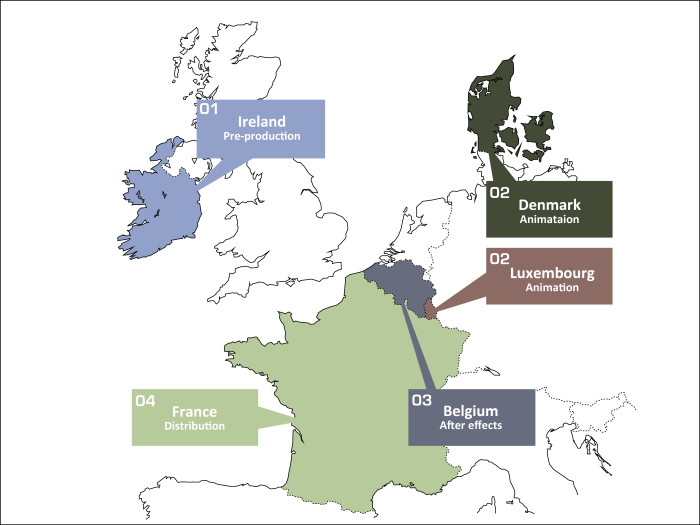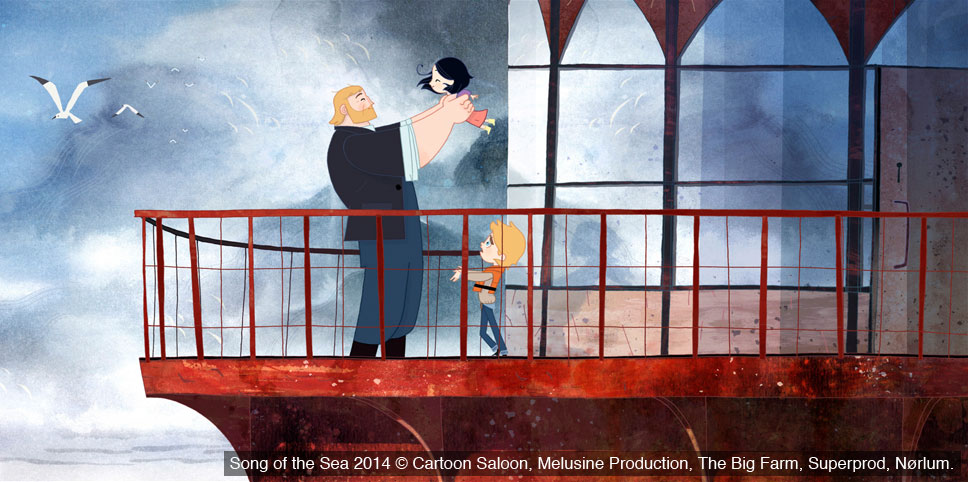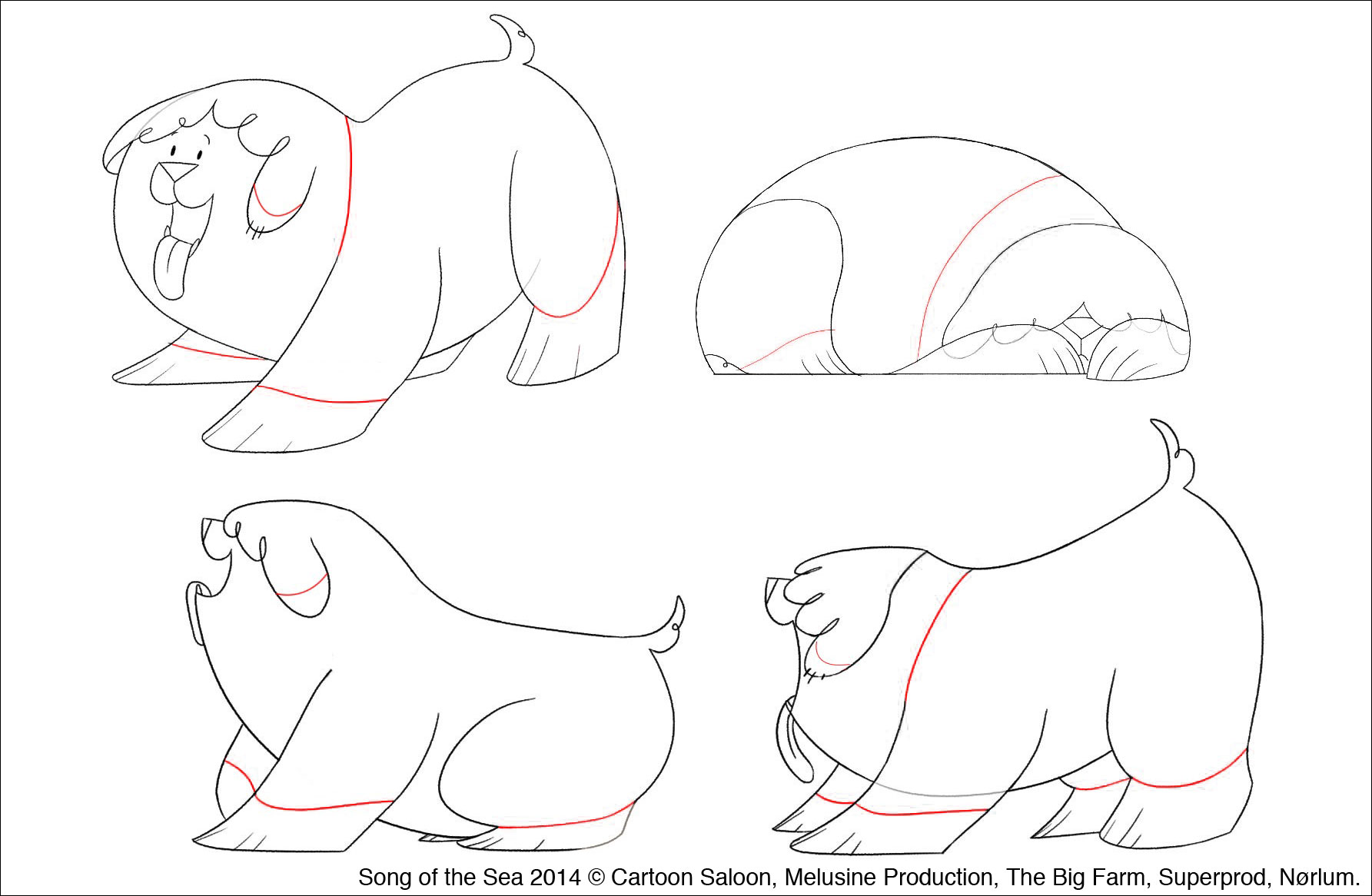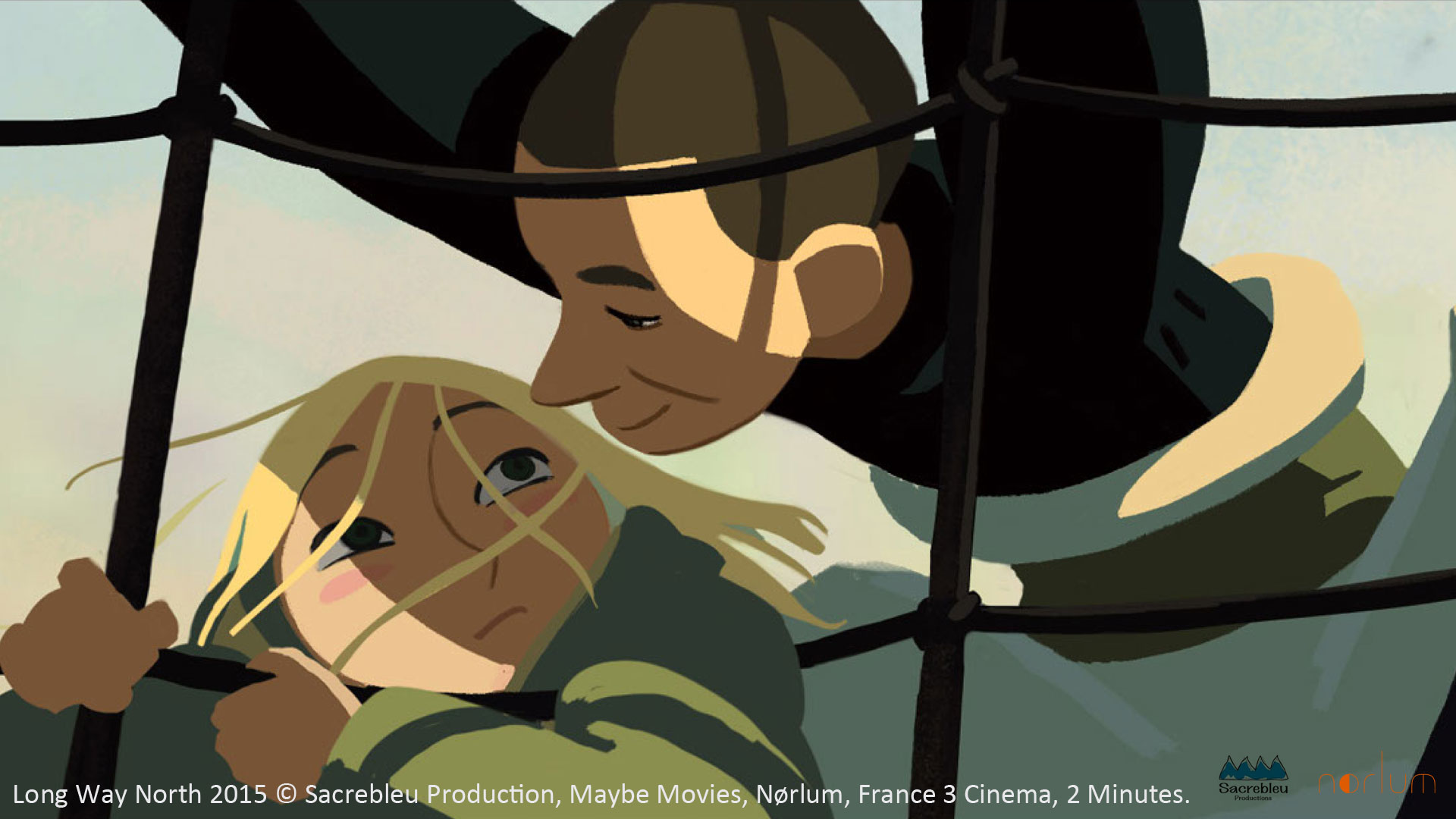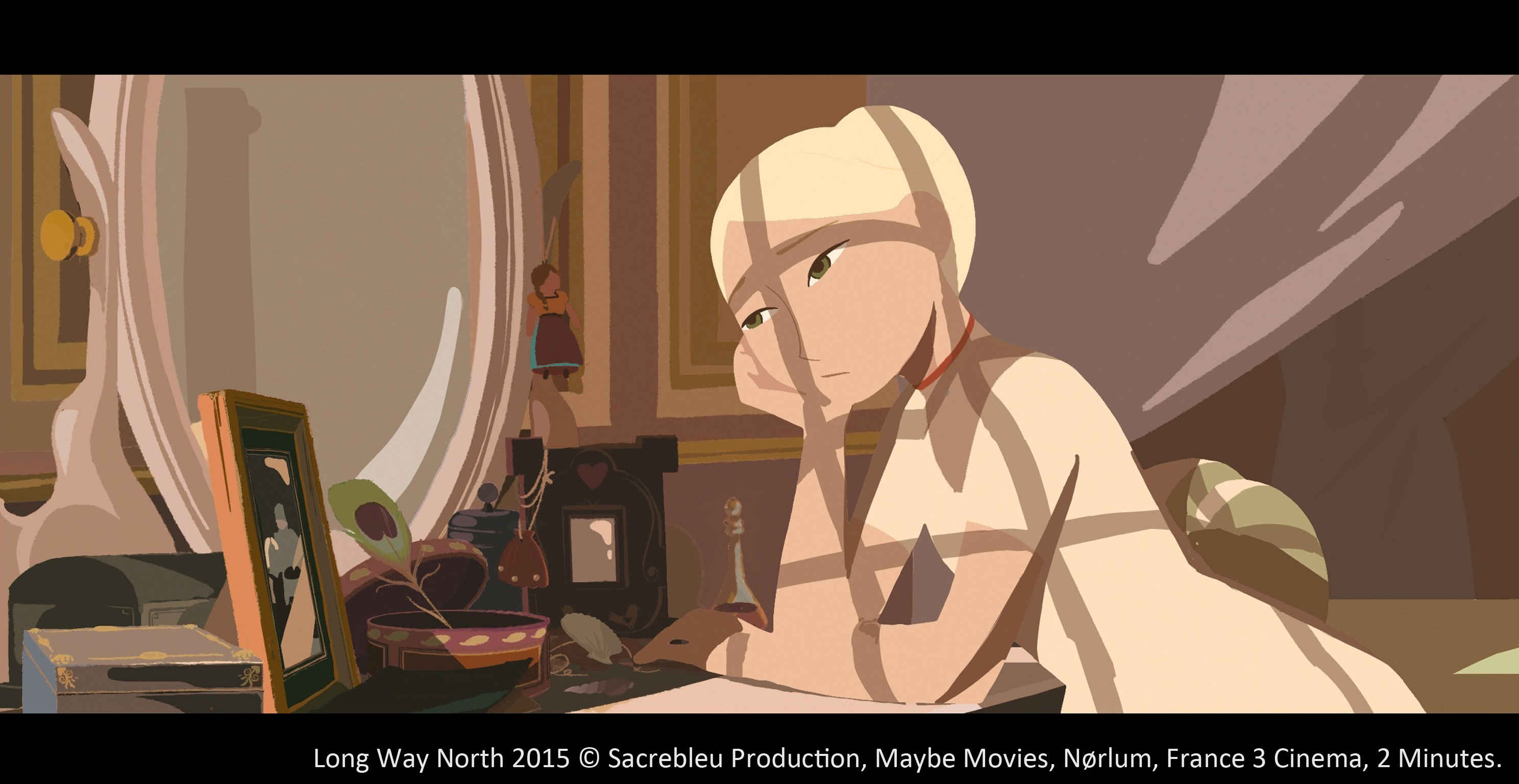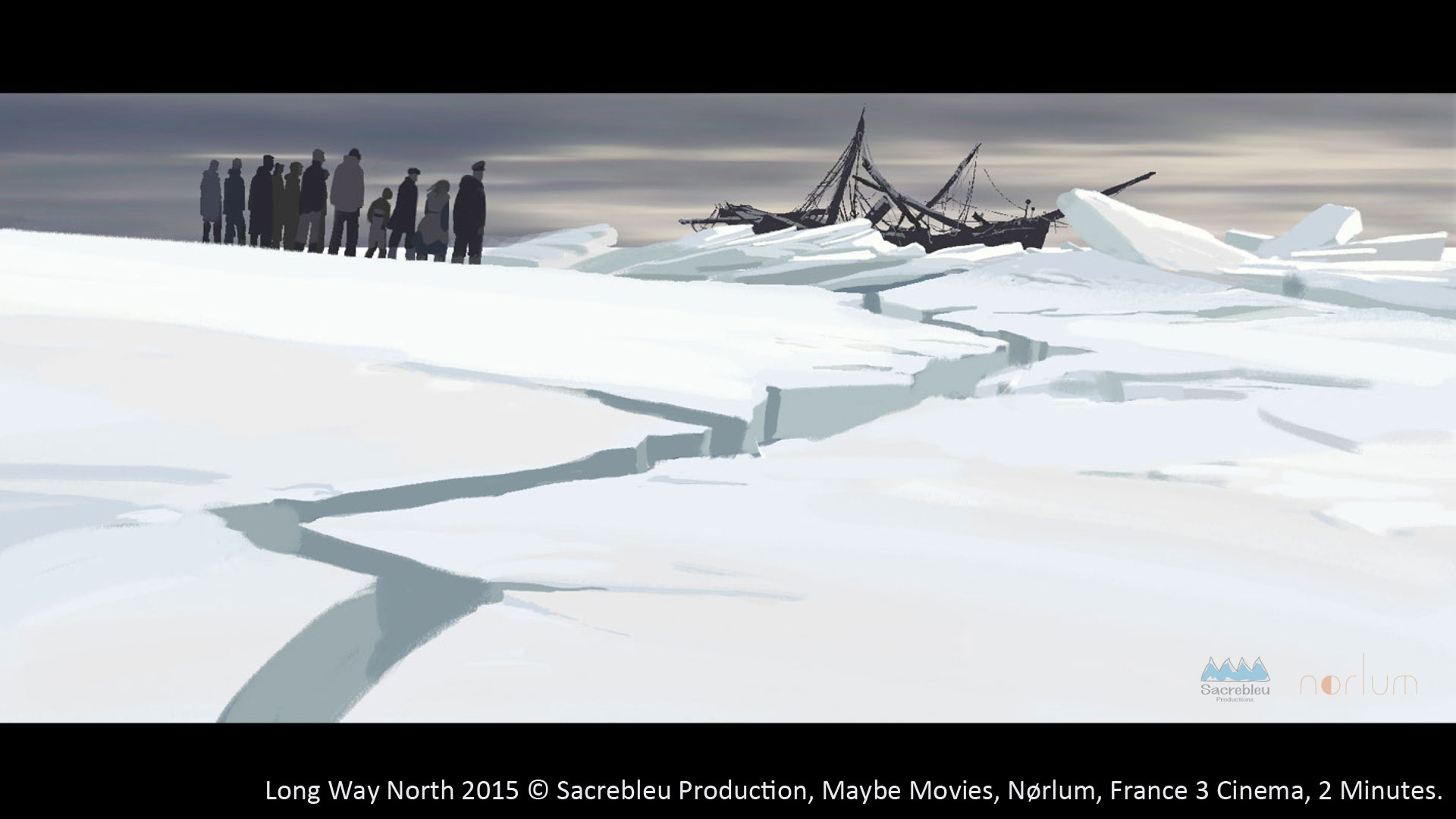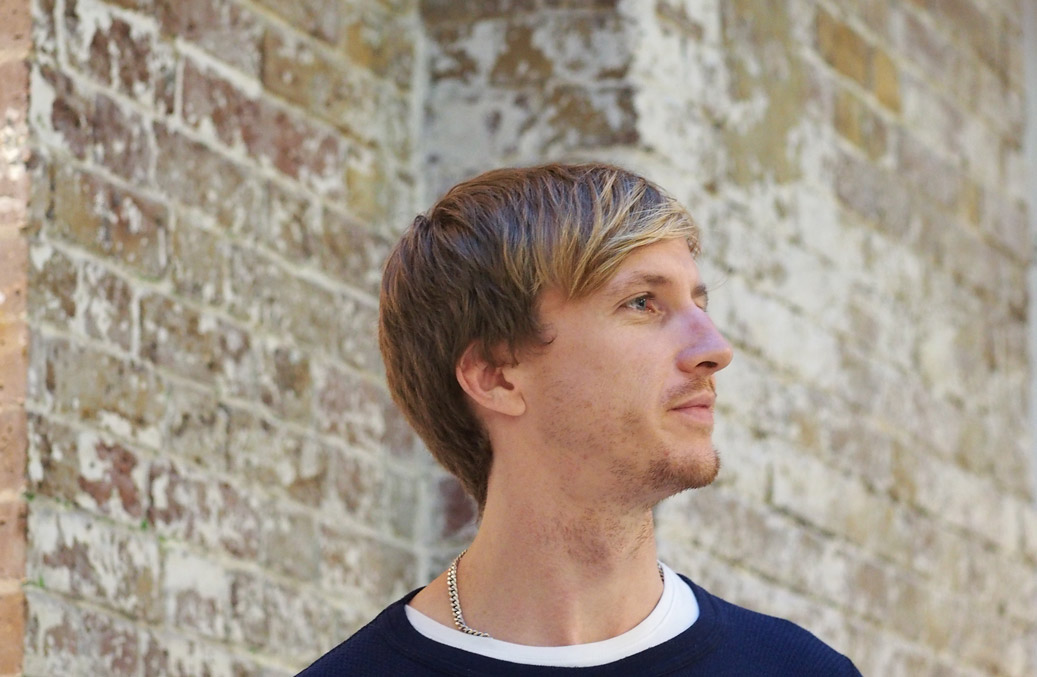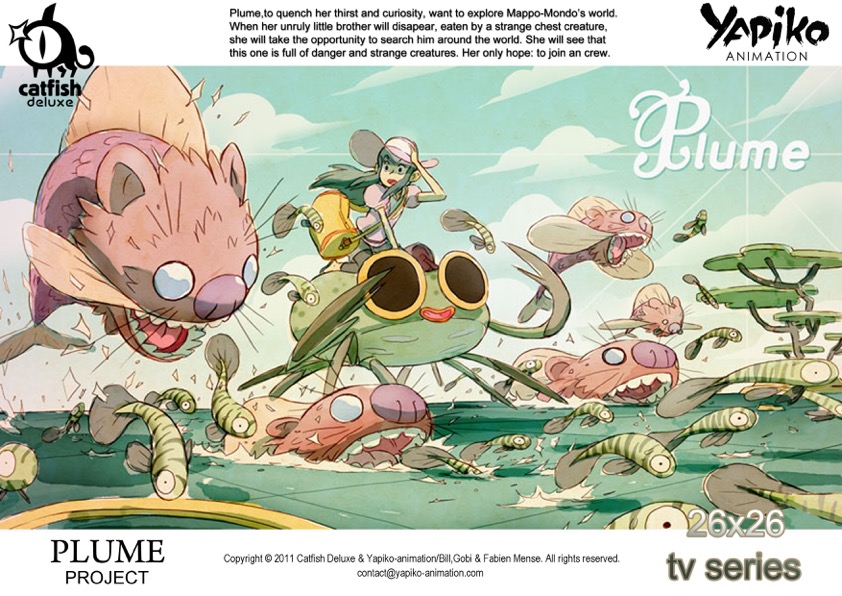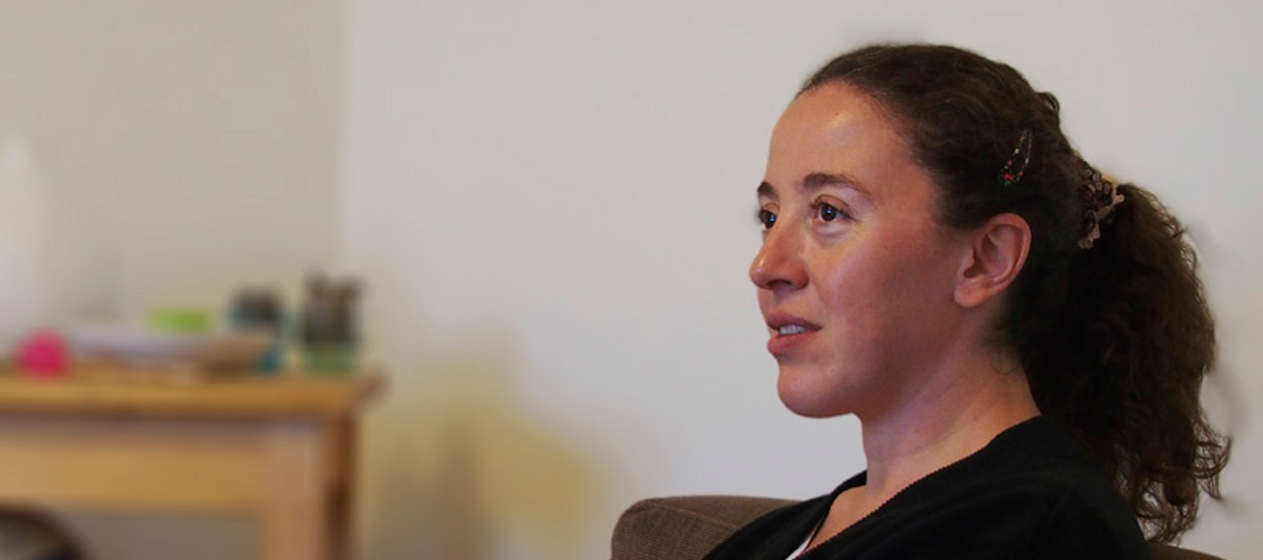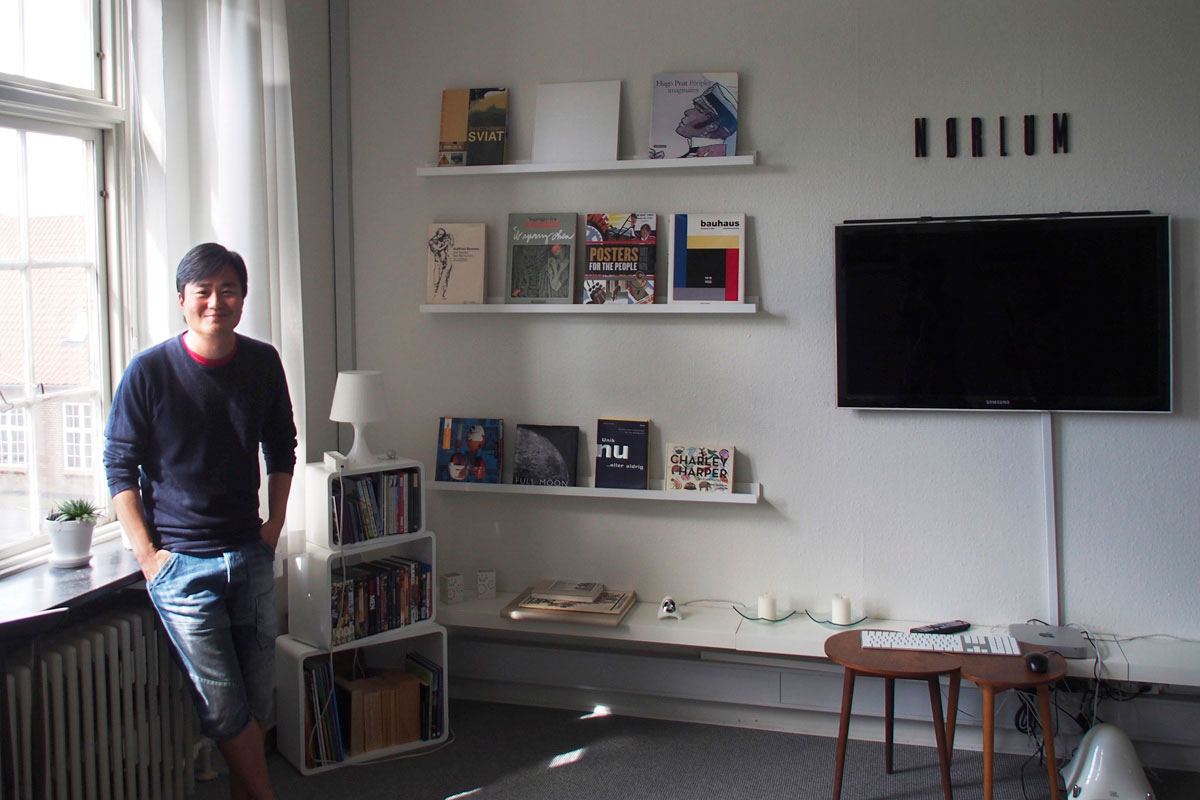
The Animationweek editorial team visited Nørlum, the animation studio in Viborg Denmark and interviewed Claus Toksvig Kjaer, the Producer and Partner at Nørlum. We also glimpsed behind the scenes of their two beautiful animated films: Song of the Sea and Long Way North. It is our great pleasure to be able to share his view, passion, and future plan of their studio and their great work.
Introduction to the Nørlum animation studio
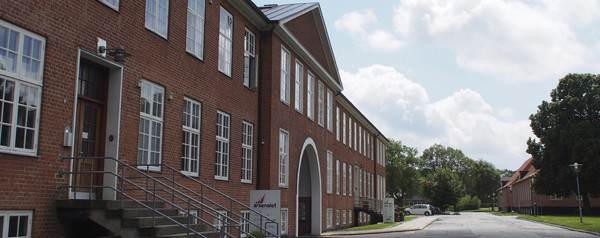
Nørlum has one of their studios in Arsenalet, which is a cluster of independent creative businesses in Viborg, Denmark. At the entrance of the studio, two beautiful posters of their work welcomed us (Picture 1). Once we were inside the studio, we could relax with a feeling of being welcomed (Picture 2). Every animator has a large-sized interactive pen display and it seems to be an ideal and comfortable place for them to concentrate on their creation (Picture 3 and 4).
Animation producer Claus Toksvig Kjaer
He is the Producer and Partner at the Nørlum animation studio. Recent co-produced films of his studio includes Song of the Sea (2014) which was nominated for Academy Award for Best Animated Feature at the 87th Academy Awards (2015) and Long Way North (2015) winning the Audience Award at Annecy International Animation Film Festival held in June 2015.
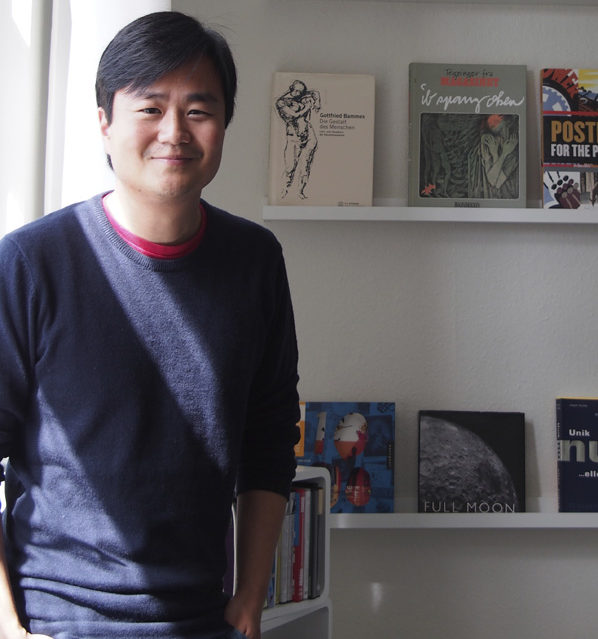
Inspired by animations in childhood
Animationweek (AW): Could I ask you about yourself? What made you work for animation? Compared to other media, what part of animation is attracting you as a medium?
Claus Toksvig Kjaer: I think this comes from my childhood, where I watched a lot of animation when I was small. I watched all the cartoons that you probably know, like Mickey Mouse cartoons. Actually, one of my favourites is a Japanese film, My Neighbour Totoro (1988). So Hayao Miyazaki, of course, was a big influence. He made so many good films. So all those things combined influenced me to work in animation. I loved Tex Avery, he created Droopy. I liked those kind of short films, which are really funny. He took animation into a really weird and awesome place. The Road Runner was moving like the speed of lightning. I thought it was genius. I grew up with all these kind of things. These films inspired me to do animation.
When I wanted to study animation, we did not have Internet. It was hard for me to study because it was not such a normal education. Now it’s much easier. Back then, when I said that I wanted to be an animation producer, people said that you can’t have the education in the same way as you become a doctor, a lawyer or a teacher. So I studied as a 2D Animator at The Animation Workshop. It was before they moved here. Back then it was just a small school with only 40 people in total. It certainly feels like a long time ago.
“We were interested in 2D animation for Feature films”
AW: What is your role at Nørlum?
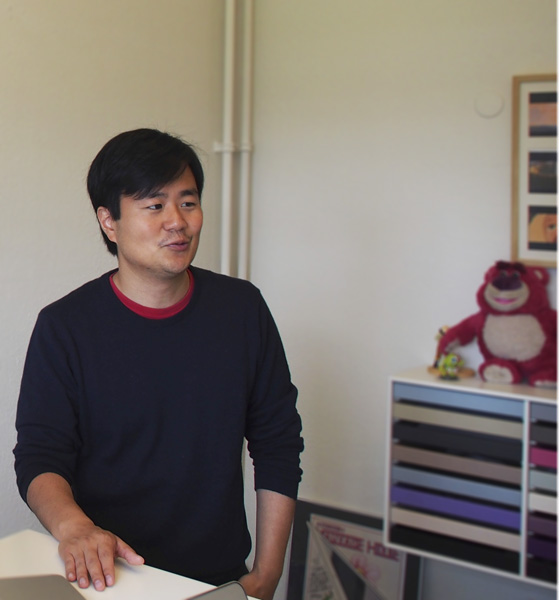
Claus Toksvig Kjaer: I’m one of the owners. We are three people that run this company. Myself and there’s Frederik Villumsen in Copenhagen. We are just starting in Canada. We have a Canadian partner, Jericca Cleland, who joined us a few months ago. So we have three offices, Copenhagen, Viborg and one in Vancouver.
AW: Could you please tell us a little bit about your studio? What do you think the major characteristics of your studio are?
Claus Toksvig Kjaer: We are 2D digital studio. We haven’t done any CGI at all. We have done only co-production feature films in 2D. We’ve done Song of the Sea and about 35 minutes of the film. It’s quite a lot of the movie. We spent about a year doing that much of film. We then moved on to the title Long Way North. We did 36 minutes of the animation, clean up and colouring. It’s actually about half of the film as the film is not that long compared to Song of the Sea. This is also 2D. We did that in Flash®. And Song of the Sea was created in >TVPaint® (∗1) Ireland, Luxembourg, Denmark and composited in Belgium. TVPaint is similar to Toon Boom® (∗2). It is a software to do 2D films. It’s still done by computers but not like in Maya® (∗3) or 3ds Max® (∗4) or anything like that. We don’t use any of those. We draw everything on a Cintiq® (∗5), as you saw. This is very nice. Nowadays most work in CGI, but we draw. We are a 2D animation studio. I think that there’s nothing different from Japan in this regard. We just don’t use paper. We still draw everything, but direct on the screen.
∗1: TVPaint® (http://www.tvpaint.com/v2/content/article/home/index.php?lang=en) is a software for 2D animation.
∗2: Toon Boom® (https://www.toonboom.com) specialises in animation production and storyboarding software to help the production process of 2D animation.
∗3: Maya® (http://www.autodesk.co.uk/products/maya/overview) is a 3D animation software.
∗4: 3ds Max® (http://www.autodesk.co.uk/products/3ds-max/overview) is a 3D design software for modelling, animation and rendering.
∗5: Cintiq® (http://www.wacom.com/en-us/products/pen-displays) is an interactive pen display.
AW: Could you please share a little bit of your studio history?
Claus Toksvig Kjaer: We are still young. We still consider ourselves as a young studio because it’s 5 years old and it’s very small. In these 5 years, I think we did quite well. We tried to find the projects that were visually interesting to me and my partners’ and great ideas that translate well into animation.
We think that we chose projects carefully because in a way you can do whatever you want when you make an animation studio. Some do commercials, films, series, shorts, games and so on. When we started, we discussed what we were interested in. We were interested in 2D animation for Feature films. We started to look at films which we think were good in our opinion. We obviously looked at Tomm Moore’s The Secret of Kells. The artistic style was very intriguing and I’ve known them for ten years. There was an opportunity to co-produce with their studio. They have a really high standard. Because 2D is not common any more, there’s not many projects to choose from. We picked some partners who had a good level of quality. We wanted to do a film each year. But because it takes so long to finance and make, we have made two so far. The aim was to have a film every year in production.
Advantage of being based in Europe
AW: You said that it’s getting more common to create animation with CGI. Is it getting difficult to find 2D animators?
Claus Toksvig Kjaer: I think we were lucky enough to have a good network. A lot of 2D animators are in France. France is one of those countries that still do 2D. They do four or five 2D features each year. When 2D animators in France were not working on projects and waiting for the next film, we could approach them. France is so close to us. It’s not so hard to go as it’s only one hour and a half by plane. I think that’s a major advantage to be in the Europe. If we were in the US, it may be harder. I know that in the US there were many 2D animators who don’t work now because they don’t prefer to do CGI. So they were doing 2D commercials or TV series. Some travel to Europe to be part of 2D feature films because TV series are usually not feature-film quality. I think we are lucky to be in Europe because 2D is still going strong.
Being part of every decision making as producers
AW: What kind of animation work have your studio worked on? What was your studio’s role in each project?
Claus Toksvig Kjaer: We are part of the producing team in every project. We have not yet been a Service Studio for hire, meaning we are not like a studio to be paid in that way. This may be good if you have to keep a production team. This is not how we run ours. The way we work is to co-finance the films. It makes us co-producers. This is a really nice way because this means that we can actually make decisions during the process. We have the meetings before the films starts. There are going to be all the people like other co-producers and finance people. We decide who the best team is going to be for making a film and how we do that. This may be two years before the film starts. We can be a part of every decision because we help financing. We also help decide where the films are going to be sold, discuss things like “target groups, festivals, branding for different countries?” or “do we decide depending on the review we get?”, etc. So the films that we are involved in really doesn’t come to an end, the journey at least. It’s kind of a continuous process like financing, pre-production, production and post-production. Even after the film is released, we still get involved. We still go to everything because we co-finance. We financed about 10% of the entire budget for Song of the Sea and created approx. 40% of the images you see on screen.
Song of the Sea (2014)
AW: Could we ask you about the story of making the Oscar®-nominated film Song of the Sea? How did the project start? How did your studio take part in the project? Could you please tell us about you and your studio’s role in the project?
“We basically started with that film”
Claus Toksvig Kjaer: I’ve known Tomm Moore and the team in Ireland for a long time. When I first graduated, my first real job was to work for them in Cartoon Saloon. I worked as a production manager for them for almost two years, from 2006 when they did their first feature film and series. We kept in touch for all the years after my return to Denmark. My partner (Frederik Villumsen) came to Ireland years later on an internship before he even had a company. Frederik is younger than me, so we didn’t study or go to school together, there is a 7-year difference between me and him. It was his first internship from the school (The Animation Workshop) and he got a bachelor degree afterwards. He met Tomm and asked him about his next film which was Song of the Sea. Frederik said he was planning to set up a studio in Denmark and asked Tomm whether he would be interested in co-producing with us. Tomm said, “yes, sure, if you can find the money we can talk about it” because Frederik was just an intern asking him, it was probably a very strange question to get. He came back to me and we actually got some money and then we went back to Tomm. Tomm was like “really?” and that was the way we became partners.
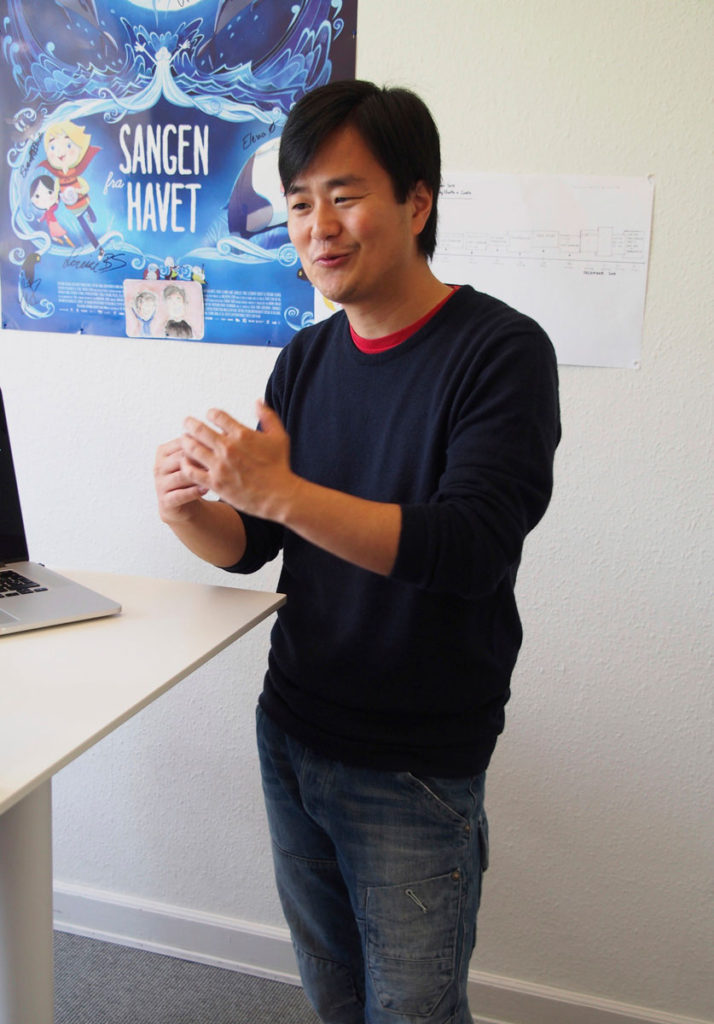
AW: When did the project start and what was your studio role in the project in a little bit more detail?
Claus Toksvig Kjaer: Besides financing on the Danish side and securing distribution for Denmark and Sweden, we would do 35 minutes of all the animation, we also did clean up of characters. Rough animation and clean-up was our part. It was a quite a lot because Song of the Sea had quite the number of characters.
Everything is animated on 1s. We animated every single frame, 24 frames per second for 35 minutes of the film. It was a lot of drawings. Many series animate on fours, sixes or even eights, depending on the style. We animated on 1s and 2s, so it was 24 drawings for one second. It was quite a big challenge because we had to do it all in nine or ten months. It’s kind of hard. In the beginning you always think you’ll be fine because there’s time. Actually, you have to animate 6-8 seconds per week per animator. Some scenes are harder than others of course. Some scenes have five characters running around and sometimes the waves had to be animated on top of that because there is obviously a lot of water in Song of the Sea. Just water can be a whole week of work and you haven’t done any of the characters. The challenge was to look at all the elements in such a short time and plan it, so that we didn’t go too much over budget. It was a nice experience because this is how you learn. Song of the Sea was the first big production for us. At that time, the company was just two years old, no, maybe just one year and a half, after it’s start up. The first job was to finance the film. It also takes time before we could get into production. We basically started with that film.
Working with 5 different countries
AW: I heard that staff for Song of the Sea were gathered from 5 different countries.
Claus Toksvig Kjaer: Yes, Cartoon Saloon in Ireland co-produced with 4 countries in total. So 5 all together. And here’s how things work in Europe compared to America. In America, you pitch an idea and if the Studio likes it they say, “OK, we’ll take it”. They have the finance to do that, so you can basically start right away. In Europe, we don’t have the same money behind the films if you just go to one country. One country and you can only get this much, and some people say “OK, we’ll do it for this money”, but we wanted a higher quality. It would be a shame if you can’t get the quality because you don’t have the money and you know how great it could have been. So we’ll see how much support we can get once we start inviting other countries who also want to do this film. For this production we ended up having Belgium, France, Luxembourg, Denmark, and Ireland as the main studio. 5 countries were putting together finance. The good thing was that we were the first country to get our finance in place. So we could be a part of the first meetings. We had a memorable meeting in Ireland with the Irish and Luxembourg and Belgium came and France was the last one to come. Combining the financing and we almost got the budget we wanted, I mean you can always dream of more.
“It is important to look at what you can do well and offer your expertise in the exact field of which your interest is”
AW: How did you find 5 different studios in 5 different countries? How did you work together?
Claus Toksvig Kjaer: One thing I learned from this process is that we don’t do the same job. We divided the jobs. It was an Irish film. They did the story for the film in Ireland with an Irish writer. The story was developed there. Basically they did all the pre-production in Ireland. Ireland did parts of the backgrounds, and designed all the characters, how they look like, all the voice casting and Art Direction is done in Ireland so we know how the film is going to look like, and even some of the animation was completed there. When we start working, we only had one or two animation tests based on the designs done in Ireland. And then, we and Luxembourg did animation because one studio could not take the whole thing because it was too much work. We could have done it but it would take much longer to produce and cost more money. That was not something the film funds agreed on. So we had to split it. Belgium studio took care of compositing and effects, like colouring, shading and texturing which you can see in the final film, and our French partner took care of the deals and distribution. They did the music rights and contracts. I think it was a nice way to co-produce (Figure 1). Not all co-productions in my experience have clear set-ups. I think you need to be fully aware with the outmost precision for this to work. If we were taking on distribution, I would not be comfortable with that because that is not what we are good at. I think it is important to look at what you can do well and offer your expertise in the exact field of which your interest is. If you can’t make that commitment, it would be good not to be involved because your partners expect 110% from you the same as we do. It’s important to do a good job for each film because the business is so small. If you fail in doing the job, they don’t want to work with you again. If I want to do animation, I have to keep doing a good job.
Behind the scenes of Song of the Sea (2014)
Claus Toksvig Kjaer: I was thinking whether I could show you something that allows you to follow the process. Early on the film, Belgium was testing the waves to see how they would move. Based on these references, we animated them. We got the animatic from Ireland. It does not really move a lot. You can follow the story line but you can’t really follow the waves. Song of the Sea has so many different kinds of water animation. It’s a story which takes place under and beside the water so it was challenging.
Before all of this starts, Cartoon Saloon in Ireland made a teaser for show. It was five years ago. They had to do something to show and attract, co-producers/investors. It basically gives you an idea of the overall look although it did not exactly end up like that in the final movie. You always have to do it to make sure that everybody knows what style and feel we are aiming towards. Also for people who finance us won’t have to worry about this. If you just look at the script, it could be anything. They want to see how it looks like. Of course, you can’t afford a lot at such an early stage but nevertheless it’s important to show these things. It is how we show to people what the movie would eventually look like. We do these, to show the character, colours and lighting, but also how it Animates. I especially like the water sequence because it has great colours.
AW: Has each studio contributed to the colours in the film?
Claus Toksvig Kjaer: No, it is done by Ireland and Belgium in collaboration. They share all of these before we started. So we could have an idea how it would all come together. It would be very hard to draw just relying on character descriptions without knowing lights and shades. It’s good to see where the light is coming from. This helps animators too. They can imagine the feeling of the shot. These are the mood boards for the designs (Picture 5-8). These all give you ideas of shadow and light. The lighting in the film is exactly the same as in the mood boards.
We did like the concept art made as a booklet. Each page show illustrations of the film and how we wanted it to be. This is again before the film got made. This was to convince the film financiers that this would be a really beautiful film. This is the character design line up (Picture 9). Now it’s fun to look at and these are the reasons why the final film looks the way it does.
This is the Character Line Up with a clean line (Picture 10). We have a guideline of how each character looks. All these references came to animators and they know how to draw and clean up the lines.
AW: How much staff did you have to animate this film?
Claus Toksvig Kjaer: I think we had about 16 people in total. Not everybody was hired at the same time. In the beginning of a project, there is always a lot of delay. If you have a full crew from the beginning of the film, half of them usually don’t have any work and we have to pay them anyway, also for these people it would be a long and boring day because they don’t do anything. We hired only half of the people to begin with, and in two months into production we hired the rest of the team. That helped us a lot because everybody was always busy and we didn’t waste any of the budget. The problem is if you burn the money too fast, it is the producer’s responsibility. People of course still expect you to do what you promised to do. You are responsible for the cash flow. Some studios went under because they failed to plan the production right and this is very difficult especially in the beginning. It’s unfortunate if the money is not used in the right way. So we spent a lot of time planning how to do this.
Long Way North (2015)
Claus Toksvig Kjaer: Long Way North is a completely different style with a completely different story. This is the reason why I love 2D animation so much because you can do all these different styles in the Art Direction phase and choose the best one to tell your story. I think that the limit of 3D animation sometimes is that it tends to look more or less the same. Similar character and background designs and this is not only when it comes to the big studios. I mean we are doing Animation, which means we can create whatever our minds can imagine. I’m certain I’ve heard somebody claim that the great Walt Disney once said exactly that, and it’s very true. We should continue to challenge the visual medium in every direction. Creating 2D Animation is like having a different style for each story and perhaps even more than one style within the same movie if the story allows it. I think 3D will absolutely go there at one point but for a long while and still many thinks that the audience only wants a particular style. So many are afraid to go in a completely different direction. The first studio that realizes that’s not the case, I mean that audiences of course want a good story but not necessarily with the same design, would gain a lot. People want to be moved and the design should marry the story completely. Again a studio that discovers that would re-define 3D Animation and taking it to new heights.
“At the premiere in Annecy, someone came to us and said ‘I forgot it was an animated film because the style really completes the story'”
Claus Toksvig Kjaer: For Long Way North, our Director came up with this unique style. It was like watching a painting come to life, as if an artist painted every single frame of the film. The scenes were done like this with paintbrushes in Flash (Picture 11-14). It was a nice challenge after doing Song of the Sea. The experience was all new but also fun for us.
AW: I think this film has a stronger contrast. Again my first impression was almost like having a Renaissance painting starting to move, but simplified of course. It’s impressive to watch these great artists creating all these digital images and still having them feel painterly.
Claus Toksvig Kjaer: Surely we tried to push for different ways of doing it. It’s true that the overall description is more mature and not such a magical journey like Song of the Sea. This is a story about a girl who escapes from home and tries to find her missing grandfather. It’s a completely different risk all together. But then again it doesn’t need this magical touch due to this is a drama piece and not about magical beings. With Song of the Sea, you needed the magic. However Long Way North can be as realistic as we dare it to be, still considering that we are creating entertainment for all ages. At the premiere in Annecy, someone came to us and said, “I forgot it was an animated film because the style really completes the story”. It was so nice to hear because that is one of our main goals when we go to work every day.
A challenge to work with 5 different countries
AW: If possible, could you please tell us the most difficulties you experienced in managing the international project from five different countries?
Claus Toksvig Kjaer: It is complicated at times no question about that. I think the biggest disadvantage is that it can be a long wait sometimes. One example is that obviously we can’t start production before each co-producer is financed and the more you bring on-board the longer it usually takes. Obviously you can’t start until everybody has secured their agreed budgets which totally makes sense because your finance is part of the overall budget. Also you have to take into consideration that if an application gets rejected you would have to seek that missing part of the budget somewhere else. Most times you won’t be allowed to start without a complete budget. So sometimes it takes 1-2 years before one can start production and this means you have to be extra careful when you are hiring for that specific project. Also the decision making process is somewhat slower when you are dealing with 5-9 Producers than just 2-3.
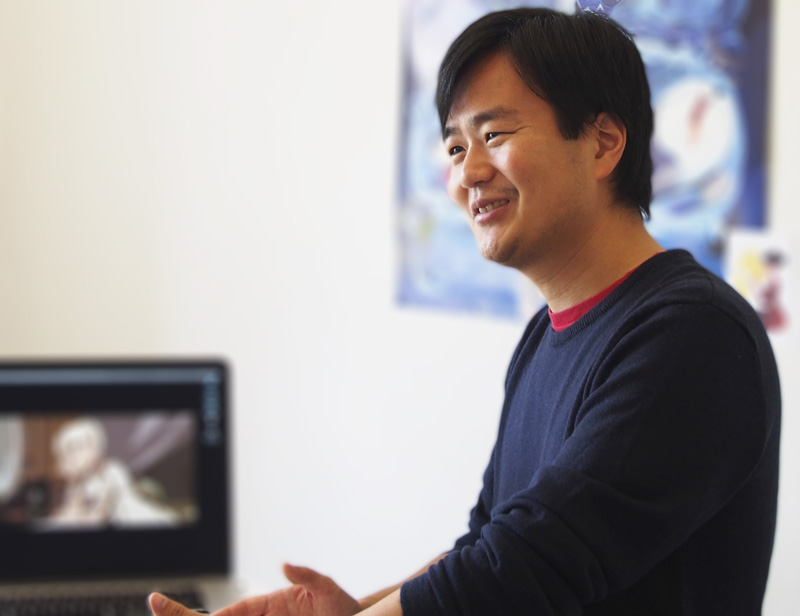
Creative freedom
Claus Toksvig Kjaer: The advantage, though, is that we can have a more creative freedom. In Hollywood, the project can be approved immediately and then you can start right away. That’s better without the wait. But I think the good thing for us is that once we have the money, almost nobody ever questioned the material throughout the film making process. I know a lot of studios that have to deal with investors who can change things in the middle of Production that can lead to very stressful situations. So once the script was done and approved and the money was secured, we never worried about the creative vision and trusted our Director completely.
Nobody said anything in that regard which was nice to work under. The thing is we wouldn’t have gotten any money if The Film Funds didn’t like the project. We would simply get a “no”. I think especially on big budget films you have a tendency to have a lot of opinions all the way through the creative process. Sometimes big changes are made just before the release. It can work in its favour but usually that is not the case.
AW: So, you can have that creative freedom.
Claus Toksvig Kjaer: Yes, you can have total creative freedom in that sense. Nobody really questioned artistically when we did Song of the Sea and Long Way North. Again if they don’t like the script, they won’t give you their support. But I think that’s a better way of working for me at least. It was much more about the overall set up knowing that we and the partners involved were up to the task, the investors trusting us to make the film we were set out to do based on the material already produced and our past experiences combined together. So in one way it’s more about – can we really do what we say we can? But after that evaluation, all good! It just takes longer to make a film. But I think that advantage is a good one!
From being told midway, “oh, you have to change the ending”. That’s up to us to change now and come up with a new one even if the first one worked perfectly. Once they approve it, they don’t interfere. Only if we don’t finish it they would have to interfere of course. It can work for big studios like Pixar, Aardman and Studio Ghibli as they did and really trusted their creative team but it’s very rare to find that set up. Usually some always have an opinion but it’s very hard to change once production starts unless you have unlimited budgets. But yes it can be very frustrating to go back and change something that works just because somebody suddenly want to change it because that person feels its his/her property and want his/her finger-print on it.
Being creative is fun
AW: I see. What was the fun part through the journey of making Song of the Sea?
Claus Toksvig Kjaer: The fun part? Obviously we work in a business where it’s creative. That’s the fun itself to be part of something that we invent with other people. It’s also great fun to collaborate on the story if you think there could be a better way of telling it, even if it may not be working out at the very end. It’s still up for discussion, one we take really early so we’ve tried out all possible solutions. To be included in that process is very nice because everyone is creating!!! That’s also why I don’t like just being a service studio because that means I will take work that has already been decided. Maybe we have some better ideas but we can’t do anything about it. In the way we work, if we’ve got an issue with something at least we can optimize and discuss and make improvements not only creatively but also production-wise.
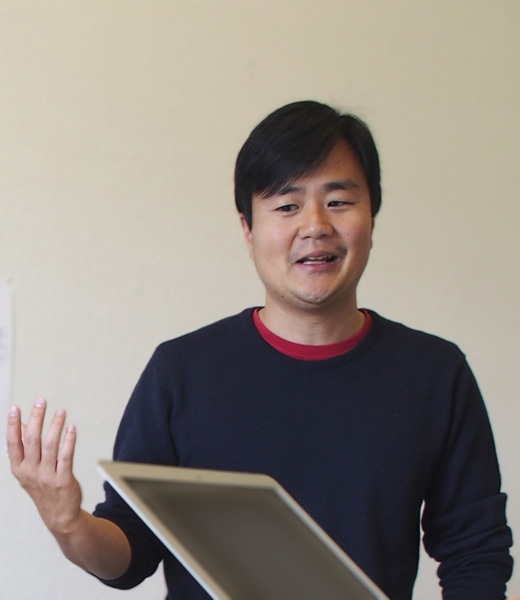
AW: That’s great.
Claus Toksvig Kjaer: That’s a very fun part to be a part of.
“There is no recipe for making a film”
AW: Did your experience of Song of the Sea influence your way of working for Long Way North?
Claus Toksvig Kjaer: I learned so much doing Song of the Sea. We took what we learned onto Long Way North, which made a lot of improvements for the crew. I also had new problems on Long Way North, but that’s just another experience to learn from and take on to the third film, and so on and so on. There is no real recipe for making a film as every film is different anyway with new story, production pipeline and talents, a whole new experience totally. You just have to go into it with the faith in everybody doing their job, and then work hard each day. I think it’s the experience with all these different people that taught me the most.
Making films is a team work. There could be 200 people. Some people I would never even meet because they work in France or somewhere else. I think you have to understand that bringing so many people together and trusting one another doing the best work possible is not easy sometimes, especially when you have so many different cultures involved. What I always tell people is that is when you learn the most. You don’t learn a lot by everything going fine. I actually always look at the films we did in the tough times and that experience is what is worth a lot to me. I’m drawn to the two years that we all worked together and we made the best out of it.
I love this business a lot. It’s probably because I can always learn something new. If I did the same thing over and over, there’s no risk and I don’t evolve basically. I think I evolve through every film because they offer me a whole new set of challenges. Every project is so different. I actually like that it is a challenge to make it. If it was easy to do, then there would be no effort and everybody could just do it and then it’s not so interesting because you get a bit lazy. Every film is such an accomplishment that takes years of commitment, many people’s time and focus and if you could do that without any effort then it’s not worth so much in a way. Making films can be pain and stressfully worrying but also fun, creative and amazing at the same time. We all do the best we can, otherwise we won’t make it. Many things can go wrong, like just two or three people not doing their job, it could be a big thing and then the film wouldn’t be made well or at all. So, I think especially making films even if hard it’s probably what makes it worth something because in the end of the day you all go towards that goal and that’s satisfying. I try to use the negative things and turn them into a positive thing.
Future
Future works
AW: What kind of animation do you like to create in your studio in the future?
Claus Toksvig Kjaer: We’re actually writing a feature on our own meaning we are not co-producing for the very first time, so we don’t take somebody else’s story and help finance. It’s a really exciting project and our partner in Canada is writing and developing it as we speak. There will be lots to decide especially the visuals however we also have to choose the other partners in a not too distant future. So yes still a bit far away but will be a big challenge to create an own IP surely the pressure is on mainly from oneself. Still it is a nice thing to start doing because now we feel we have the experience. After being involved in several films co-producing we think we are in a good position now trying to create something from scratch. When we started it was hard for us to understand how things were done exactly but after following the process and working closely together with these great talents, being part of those films, we think we’re now mature enough to do our own film for the first time.
New co-production film, Miles
Claus Toksvig Kjaer: We’ll still continue doing co-productions like Song of the Sea and Long Way North. I can show you another one that we have started on called Miles. Again a different style from the pervious 2 films. This is a film that I myself am very excited about. I think the story goes in a completely new direction. Jumping to that after two films we’ve done, it will be a very fun journey. The director is very famous in France. Her name is Rébecca Dautremer and she is one of the best-selling children’s book illustrators in France and this will be her first film. Everybody knows her so it will be very exciting for people to see her first movie.
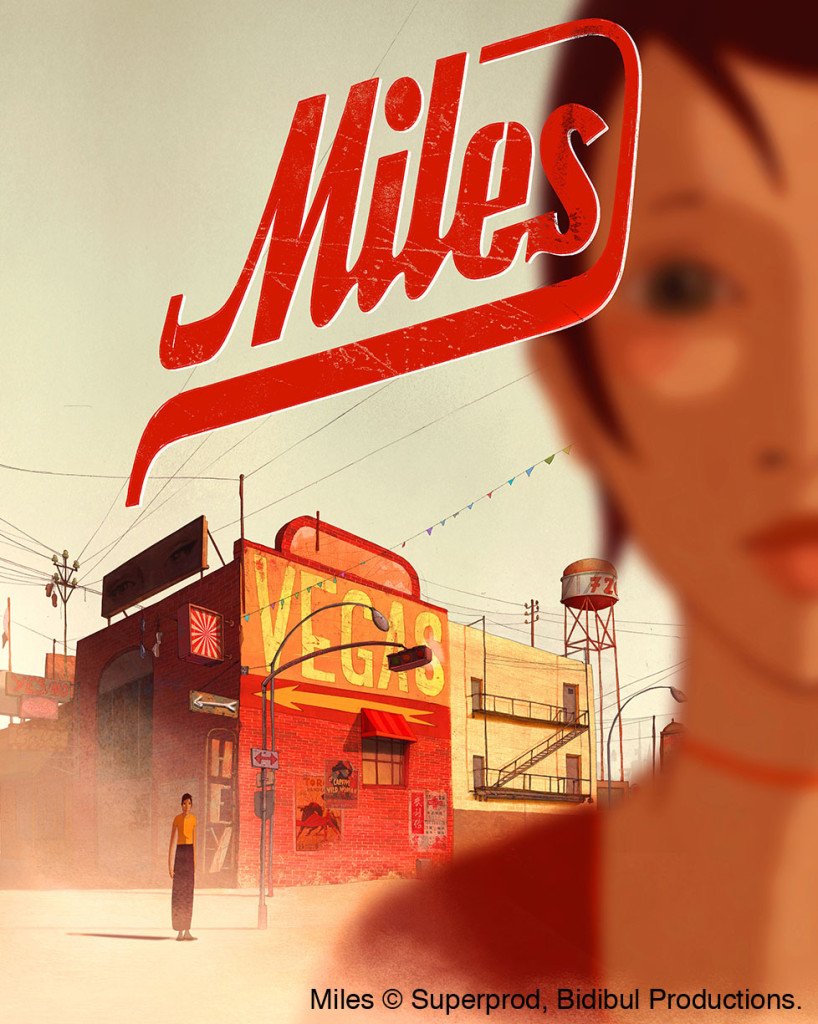
AW: By watching the teaser of Miles, I can feel that all the action synchronised with music well and everyone is very active and it’s actually very smooth.
Claus Toksvig Kjaer: The characters are still done in 2D but some of the layout elements are 3D. They wanted more active camera moves. We’ll probably start this film sometime next year hopefully. Again it can be difficult to give an exact starting date as you remember putting together the finance for these films can take a while. But yes that’s one of our future co-productions.
AW: Wow. We are looking forward to the next film.
Future vision of the studio
AW: What is the hope or plan of development of your studio as an owner?
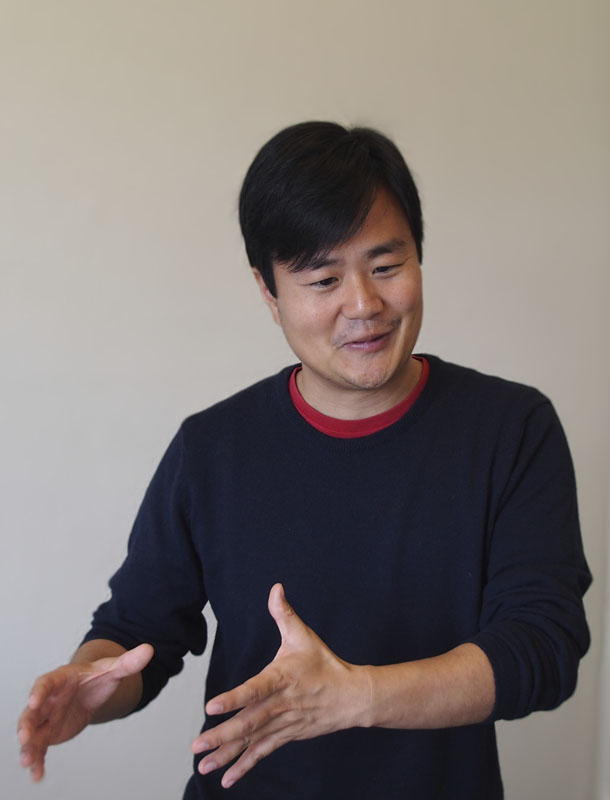
Claus Toksvig Kjaer: Definitely continue to do what we like to do. There are two things. We had a conversation the other day about how big we want to be as a studio and I don’t see us right now being too big. Ideally I’d like us to be about 30 people but I would never prefer anything above 50 because I’ve been to studios where you feel like an alien and you hardly know anybody, which can make it hard to focus on just the one thing. Not that I don’t respect big studio set ups it just takes a huge commitment to administrate on a daily basis. But I would like to focus on one thing, like one film at the time, so we can do our very best making the best possible product. If we had to do five films, you have to prioritise and then you give less and it’s not so satisfying for me at least. I don’t know how everybody else thinks. Some people could produce 5 films or more per year. That’s great. But if I did that many, I can’t do them all that well and I couldn’t honestly tell people that I gave my 100% to all of them. I think you can only focus on that much at the same time and then you have to hire somebody else to take over on some of them, which can work fine but then it’s not me any more, then it’s somebody else handling those other films. So I kind of enjoy being a small studio focusing on the one task at hand. Giving it your full attention and as long as that’s the job I’m happy.
Sometimes you get offers which can be hard to refuse so you don’t know how it’s going to be in the future but at the moment that’s the studio we would like to have. Because all the other things for me is not so important, I never did this to get wealthy or to find my fortune. Then I think I would have gone with a different trade than animation, like stock exchange or whatever. I did this for the passion of what you saw and hopefully that is transparent through the work we do. So, for me it’s about the project. If I don’t have that great project to wake up to every morning there is no meaning to why I am doing it.
I guess that’s my indicator, to find great material that I would like to watch myself. I don’t think everybody necessarily wants to see what they do, sorry but I know a few. Of course I understand if some people have a company where they have to feed and take care of 200/300 employees. Sometimes they can’t be so picky about what they take in. I totally understand. If that’s the business you run and that’s what you like, that’s fine. We have a much smaller business and then focus on each job as they come along. I think that’s the heart in our company and I like the fact that we’re not more people. You just saw the room. We know everybody and that means that there is not this big hierarchy when you come to work. If there are 2,000 people, you can’t even meet the manager. I like that we can meet everybody and it’s a very calm and relaxing place to be. That’s the kind of place I would like to work in. Also people feel more responsible for what they do. Taking special pride in their job feeling much more appreciated because you are not just one out of a million. That’s nice because then your work suddenly means a lot and you can let them know each day. If I have 200 people to manage, it’s hard to know all the time what’s going on in the studio. I think these are some of the values that we really appreciate. It’s a bit more relaxing and allows a different way of working. Our studio is located in a small town as well creating a less busier atmosphere.
Having a passion for a particular job in addition to a passion for animation
AW: Do you have any general advice for people who want to work for or be a part of animation industry?
Claus Toksvig Kjaer: Besides having a passion for animation, which we all share, that’s one thing, but you also have to have a passion for that particular job you do to excel in it. I think for an animator it’s a different passion besides enjoying the film and the artwork. The passion for me at least, as a producer, is to network with people because that’s my biggest job. It’s my job to go out there, find new projects and people who want to support and being part of it all. I have to talk to a lot of different people every day and not being afraid of being rejected. If you’re an animator, you have to focus on the characters in each scene and the acting and sit and really go into that space, which can be very personal. This is a completely different job but we work the same film.
So, I think you need to find that space where you are particular passionate and that’s not something you learn. You may learn to appreciate it but I think most people know what space they’re not comfortable in and what space inspires them. I think it’s all about finding the space where you feel at home. Here’s the thing I realised: You can always do your job but you can’t do a great job if you’re not comfortable.
AW: Yeah, it does make sense.
Claus Toksvig Kjaer: If I talk to people and have to convince them to be part of the film, I talk about these films like they are my children. If I don’t talk with inspiration or if they feel that I don’t care anyway, why should they care? If I had to put on a mask to explain projects that I don’t particular enjoy myself, oh that would be hard. I think people can feel when you are not genuine. We advance because at the end of the day we care deeply about the work and the creation.
So, it really depends on where you’re coming from and in animation there are so many jobs, from directing to project managing to supervising. As a Supervisor you have to care a lot about every single animator and how they work. Some are very good at acting scenes, some at action scenes, or some thrive when they get many characters at once. You have to figure this out as a Supervisor. So you have to like challenging each one individually because we’re all different and not robots. Everybody has strengths and weaknesses. As a supervisor, I think your most important job is to find out what everybody individually really jumps at. Also you get interrupted every day by animators who need your feedback, meaning you will have to quickly jump to a new scene, focus changing all the time. In comparison to an Animator, you don’t necessarily need to be a great people’s person. You just have to deliver scenes that are emotionally engaging and telling the story and being able to tolerate changes when your scene is not working.
For me it’s very interesting to look at all these different jobs that we have even in our small studio. I think this is amazing when people with different skill sets are completely depending and trusting each other creating something together. It’s like writing stories. When we start writing scripts for movies, we sometimes feel that the script is not right somehow. It can be a character, location or something else that is not serving the story. But we all work closely together giving our feedback until we get it right and it can take years to get right but at least your are not alone. We are all in this together to serve the story as best as possible.


